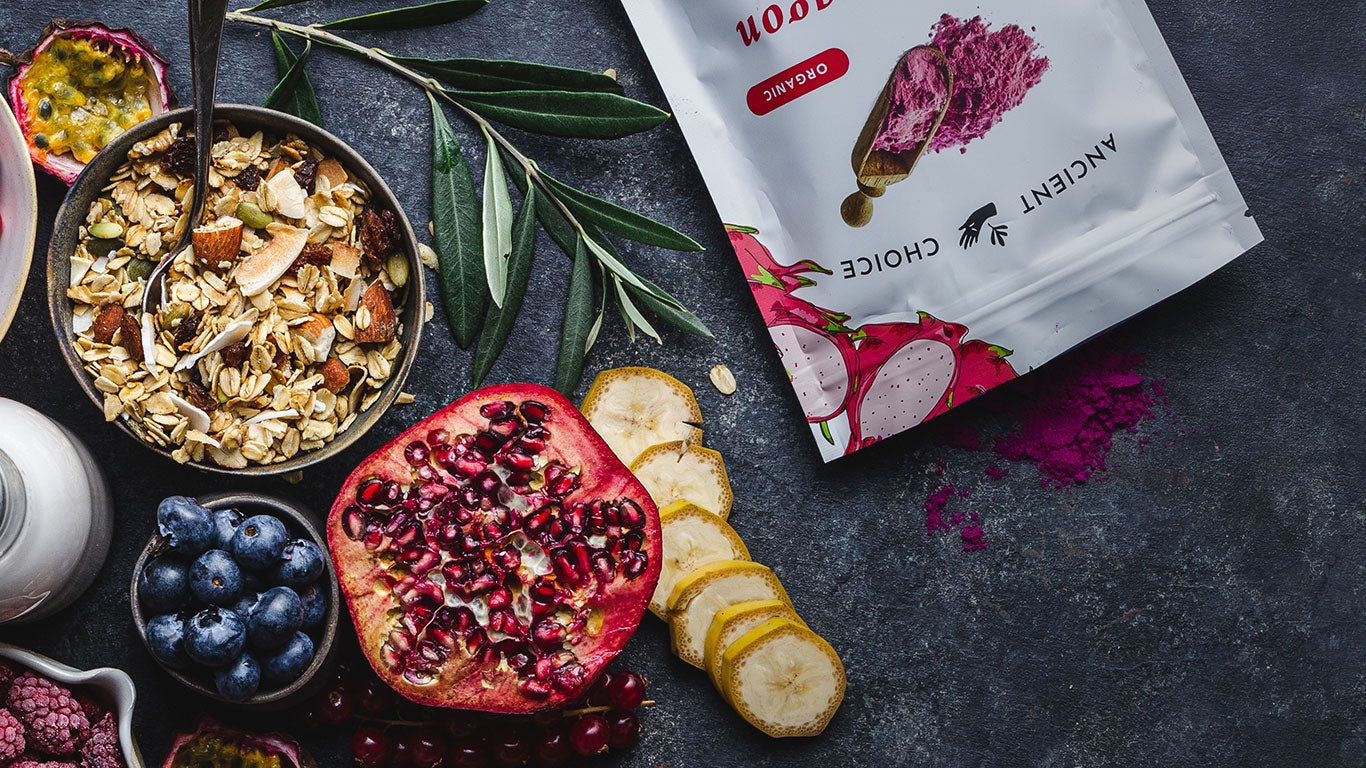
Dragon fruit, or “pitaya” as it’s sometimes called, is a bona fide superfood.
But you might be wondering, what really makes something a “superfood” in the first place?
The definition of superfood may change depending on who you ask, but if there is one thing everybody agrees on, it’s that a food must be exceptionally nutrient dense to earn the title.
Take blueberries for example. They are possibly the most famous superfood, and for good reason. They are loaded with vitamins, soluble fiber, and phytonutrients. Just a handful of blueberries can provide a significant dose of nutrients.
Can the same be said for rice? Not exactly. Although rice does contain some interesting components, it can hardly be considered “nutrient dense.”
What about dragon fruit? Is it nutrient dense enough to gain the title of superfood?
Nutritional Breakdowns
White Rice
Check out the nutritional breakdown.

100g of cooked white rice:
- 130 Calories
- 29 g carb
- 1 g fiber
- 0.2 g fat
- 2 g protein
- 0.2 mg iron
- 13 mg magnesium
- 0 IU Vitamin A
Not very exciting. Calorically dense, carb heavy, nutrient poor. This is not a superfood.
How do blueberries compare?
Blueberries - Are They a Superfood?

100g of raw blueberries:
- 57 Calories
- 15 g carb
- 2 g fiber
- 0.3 g fat
- 1 g protein
- 0.3 mg iron
- 6 mg magnesium
- 9.7 mg Vitamin C
- 54 IU Vitamin A
Much better! Notice that for less than half as many calories, blueberries deliver a lot more in terms of nutrients.
Back to the original question - what about dragon fruit? Can it hold its own against the almighty blueberry?
Dragon Fruit - Is it a Superfood?

100g of raw pitaya:
- 59 Calories
- 12 g carbs
- 3 g fiber
- 0.6 g protein
- 0.5 mg iron
- 40 mg magnesium
- 2 mg Vitamin C
- 58 IU Vitamin A
Well… would you look at that? Not bad!
For around the same number of calories, and with less carbs, dragon fruit offers comparable benefits to the blueberry. And if you are specifically seeking magnesium, pitaya is a superior choice.
Answer: Yes, dragon fruit is a superfood because it is nutrient dense and delivers lots of nutrition using less calories than most foods.
Phytonutrients
There’s something else that pitaya and blueberries have that rice is missing: color. Why is color important?
Many plants get their colorful pigments from compounds called phytonutrients. These are produced by plants to keep themselves healthy. For example, they may protect the plant from insects or guard against UV radiation.
That’s great and all for plants, but what about plant-eaters. Why should we care about these colorful compounds?
Phytonutrients have many benefits but are most famous for their antioxidant and anti-inflammatory properties. They have also been shown to detoxify carcinogens, improve the immune system, and repair damaged DNA. They may not be essential nutrients, like macros or minerals, but they are certainly powerful compounds that do wonderful things for our health.
That’s exactly why we sourced the red / pink fleshed variety of pitaya for our Ancient Choice Dragon Fruit Powder. The high phytonutrient content gives the powder a rich, vibrant color.
So is dragon fruit a superfood? If blueberries are your benchmark, then the answer is a loud and clear “Yes!”







